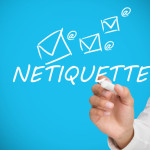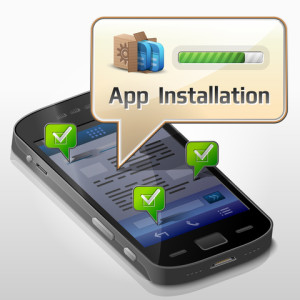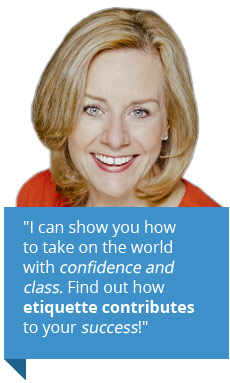Latest Posts
August 13, 2014
When you arise in the morning, think of what a precious privilege it is to be alive – to breathe, to think, to enjoy, to love – then make that day count!” – Steve Maraboli
A few months ago, I had first-hand experience of knowing how one’s life can be changed with one small piece of information. It only took a few small moments to receive unwanted news for me to begin to have a different perspective.
Back in April, I had a medical scare involving the big C – breast cancer. I went through many doctor’s visits, exams, and biopsies, and while I worked on staying positive I did wonder what was in store for me next.
If my tests were poor what course of treatment would I have? How long would it take to treat the problem? How will this affect my family? What plans would I have to alter short term? What goals and plans would have to be ditched? Would I ever be able to go back to my regular life? The unknown was what scared me the most.
Now, I’m happy and blessed to tell you that my medical results turned out negative… I had truly dodged a bullet! Of course this was an immense relief for my family and I, but it taught me something more than just to focus on my health.
During my “unknown” period, I was ever so grateful for those around who opened their hearts and gave me the time and space to just be. Friends, colleagues, and family jumped in to support me in beautiful unexpected ways. From flowers, cards and plain old phone calls, my life was filled with knowing others cared.
After I took “me” time to allow myself to recuperate from the scare (think self-care – spa time, shopping therapy, meeting friends for afternoon tea, etc.), I realized I had let some relationships in my life slip away. While at the same time, I was positively taken back by the amount of love and support.
I often advise my coaching clients to find the positives even in difficult situations, and for me, this was my opportunity to walk the talk and I did this in two ways: reconnecting with people and finding magical moments.
Through my ordeal I found myself wanting to reach back and reaffirm connections or share thoughts that were left in the land of the unsaid. When I began to reach out, people reacted so positively with their warmth and love. I soon discovered a newfound appreciation for keeping in touch with more people in my spheres of influence.
At the same time I began to notice magical moments. The moments have always been there, but I just hadn’t noticed them. Now I find myself smiling and feeling warm-hearted at small everyday occurrences. For me, this was spending my time with my grandchildren and watching their faces. The way their eyes light up in such an innocent, or humorous way is the epitome of my magical moment. And I remember myself thinking that I sure hoped I would be around to watch those faces graduate from school or even get married.
I also began to notice more magical moments in other everyday occurrences. Beautiful sunsets, the way the moon shines on the ocean, an elderly couple holding hands, and even a special eagle I’ve named Fred who lives in the tall pine tree next to my home.
Often times, we forget to stop and relish in these magical moments, as we are easily swept away by the busyness of the everyday.
Here are 3 tips to help you join me in uncovering more magical moments.
Continue Reading »
 Print This Post
Print This Post
Posted by Margaret Page in A Page of Insight
August 7, 2014
 Often, people avoid introducing themselves or others, because they are uncomfortable doing so and perhaps afraid they might not follow proper protocol. In truth, it’s fairly simple: always state the name of the most honored person first. An example would be, “Melinda Gates, I would like to introduce to you my roommate, Jane Drake.”
Often, people avoid introducing themselves or others, because they are uncomfortable doing so and perhaps afraid they might not follow proper protocol. In truth, it’s fairly simple: always state the name of the most honored person first. An example would be, “Melinda Gates, I would like to introduce to you my roommate, Jane Drake.”
Then, add a snippet of information on a common interest to help them connect and begin a conversation. Add information about their career, education, place of origin, hobbies, interests, family or a host of other areas. Here is an example “Jane is in my Spanish class. She’s just returned from a trip to Cancun. Aren’t you planning a trip there this winter?”
When presenting one person to another, look at the most honored person first, then turn to the other person. Remember to distinctly pronounce the names to provide respect for those you are introducing.
If you are in a more formal setting, or when there is an obvious age difference, it’s best to use titles and last names, such as: “Mrs. Jameson, I’d like introduce to you Mr. Robertson.”
When you are introducing yourself to others, always include both your first and last name and say your name slowing so people can catch it. Then add something about yourself to help move the conversation forward. Then, ask for the other person’s name. Repeat the name of that person, such as, “It’s great to meet you, Joan.”
Always maintain eye contact with the person you’re being introduced to. Eye contact demonstrates that you are paying attention and the introduction is important to you.
Email Introductions
When introducing two people through email, here are some tips to follow:
- Like any other email, the subject line should the topic. Something like: “E-Introduction: Jane Smith and Larry Vance,” ensures that both recipients are alerted to the content.
- Most of the time, there is a specific reason for the introduction –Person One (Jane Smith) asked you to provide an introduction to Person Two (Larry Vance), for example. Open the email with something that indicates you’re making an introduction on their behalf. Then, continue with the introduction: “Larry Vance, allow me to introduce Jane Smith. Jane is a freelance designer and I think she could be of great assistance to you on your new web design project.”
- Close the email with a line that takes you out of the conversation. Something like: “I’ll let you two take it from here. All the best, Margaret Page.”
Want to learn how to keep up with etiquette challenges in our modern society? That’s where I come in! Be more confident when making introductions—and maximize your personal impact today! Find out more about business etiquette training.
Continue Reading »
 Print This Post
Print This Post
Posted by Margaret Page in Communication and tagged introductions etiquette
July 31, 2014
 The great thing about where we are with technology today is that there is always something new and exciting just around the corner. Google Hangouts is one of the newest ways to communicate online in group discussions. Developed by search engine giant, Google, Google Hangouts is an instant messaging and video chat platform that launched last year.
The great thing about where we are with technology today is that there is always something new and exciting just around the corner. Google Hangouts is one of the newest ways to communicate online in group discussions. Developed by search engine giant, Google, Google Hangouts is an instant messaging and video chat platform that launched last year.
With Hangouts you can bring conversations to life through photos, emoji, and group video calls across computers and mobile devices – for free!
As with any new technology, it’s natural to be a little apprehensive (nervous even!) to try it out, and Hangouts is no exceptions. To ensure that you have a pleasant experience—whether as a host or a participant—I’ve put together a few Google Hangout etiquette tips to keep in mind.
Participant Etiquette
- RSVP. Respond with a yes or no when invited to a Hangout. There are only 10 participants allowed on a Hangout at one time.
- Be prepared. If it’s your first or your twenty-first Hangout, log in 10 minutes before the online meeting to make sure you have all the technical requirements set up.
- Invest in a headset. If you’re participating in an audio conference of any kind, use a headset. This is not only important if there are others working near you, but it prevents feedback from your computer.
- Be on time. No matter what kind of meeting you’re attending—virtual or in-person, the “on time” rules apply. You can log into the Hangout and leave the window open while you wait for others to join.
- Speak clearly and wait your turn. You can use the chat feature to post your comments to the group, as well.
- Mute your microphone when you’re not speaking.
- If you aren’t “camera-ready,” you can turn off your camera (top right of screen) and your profile image will show up.
- Save your snacking for after the chat.
- Pay attention to the speaker.
Host Etiquette
- Invite up to 10 people to a Hangout (that’s Google’s limit for calls)
- Send out clear instructions for the Hangout well before the scheduled meeting time. There may be plugins to install or other technical details to follow so that the participant is able to join.
- Test your own equipment setup in advance of the meeting. This includes your microphone and camera! Attendees will want to see you!
- Have an agenda. Establish a timeframe for the Hangout – as well as an agenda. Like any other meeting, it’s easy to get derailed if you don’t have a plan.
- Begin and end on time.
- Ask participants to mute their microphones unless they are contributing to the conversation. This keeps the keyboard clicking distractions to a minimum.
- Share presentations and engage with the group. With online meetings, you can be as interactive as you are during offline gatherings. Share presentations. Ask questions. Poll the group. Have fun with it!
Google Hangouts are proving to be a great new way to communicate and collaborate with people across the globe – in real time. Have you participated or hosted a Hangout? I would love to hear about your experience!
Continue Reading »
 Print This Post
Print This Post
Posted by Margaret Page in Communication and tagged Google Hangout etiquette
July 18, 2014

I read this the other day and unfortunately, it didn’t surprise me: “Plan any event and chances are one in five of the people you invite will be late.” This comes from a recent study done at San Francisco State University that found that 20% of the U.S. population is chronically late.
All of us have encountered these 20% — the people in our personal and business lives who keep us waiting. And waiting….. However, punctuality, sadly, is something that we rarely discuss. The importance of it, that is, especially in the business arena.
When meeting for business, remember this: “If you’re not 10 minutes early, you’re 10 minutes late.” Or another favorite of mine “If you’re early, you’re on time. If you’re on time, you’re late.”
If you’re one of the 20% that is battling lateness, there are things you can do to transform yourself into Punctual Pete (or Patricia).
- Plan ahead. Buy a coffee pot with a timer and set it up so your coffee is ready when you get up. Pick out your clothes the night before. Set your car keys in the same place every night. It’s amazing how much time is wasted running around in the morning. Planning is everything if you are hanging up your tardy hat.
- Track your time. Knowing how to “tell time” is a good place to start revamping your lateness routine. Track how long it takes to shower in the morning. The time it takes to get to the office, etc. You will be surprised at how far you are off the mark when you see those numbers on paper!
- Be realistic. Chronically late people are often unrealistic about how long it takes to do things—to get places. And that’s a slippery slope when you’re running from one meeting to another. If you know you’re going to have a 5-minute walk from one meeting to the next, avoid scheduling back-to-back meetings. Or, alternatively, schedule meetings for 20 minutes, instead of 30 minutes, allowing you time to juggle both.
- Buffer, buffer, buffer. If it takes you 30 minutes to get to the office, and you have a meeting promptly at 8 a.m., leave the house at 7:15. This extra 15 minutes of buffer time will give you a buffer for unexpected delays en route. Even better, check traffic before you leave the house. Yes, there’s an app for that!
- Test the route. Meeting a client at a restaurant across town that you’ve never been to before? Play it safe and map out the route the night before. With GPS apps nowadays, you can easily determine the fastest way to get there.
- Bring along reading material. Being early can be a blessing. While you’re waiting for the other person to arrive, you can catch up on some reading, listen to an audio book or catch up on email. With all the technology we have today, there is no reason you can’t be productive while you wait.
- Stay organized. There’s really no excuse to be late if you use the tools we have today to stay organized. Make sure your meeting calendar is synced to smartphone. Set a reminder for 15 or 30 minutes – giving yourself enough time to wrap up what you’re doing and move on to your meeting.
- Get some zzz’s. If you’re sleeping through your alarm and rushing around to get to work on time, you’re probably not getting enough sleep. Get your day off to the right start by getting in 7- 8 hours of sleep.
Being on time shows others that you value their time. After all, we all know that once it’s gone, we can’t get it back!
Continue Reading »
 Print This Post
Print This Post
Posted by Margaret Page in Business Etiquette and tagged business etiquette, being late
July 8, 2014

In a world where we are communicating more and more through email, text and social media, the value of a physical thank you note is being lost. Yes, it is amazing how easy it is to stay in touch nowadays – a quick text to see how someone’s day is going– but with something as important as a thank you note, I still believe sending a physical card is far more valuable.
After all, you can’t display an email on your desk or hang a text on your bulletin board!
Physical cards still have a longer shelf life—and greater impact. Because we get so many emails and text messages throughout the day, it’s such a thrill to open our mailbox (our REAL mailbox) and find a physical card inside.
But who has time for that, right? We have the best intentions – we really do want to send out more cards, but time gets away from us and it becomes just one more thing to add to our to-do list. Did you know that people intend to send out an average 70 cards a year for various occasions, but in the end only send out 10 because of the inconvenience? Unless you really plan ahead, when you think about sending out a card, you’re scrambling to find a stamp!
Well, that’s why I am such a huge fan of Send Out Cards. I love them.
SendOutCards, founded by CEO Kody Bateman in 2003 – has sent out over 100 million cards since its launch. The online service makes it so easy to send a personalized, printed greeting card to anyone. You choose a custom card, add your own personal photo and message – and then you just click SEND. They take care of all the rest – printing, stuffing, stamping and mailing the physical card for you.
My personal goal is to send out one card each day. And although I think email thank-yous are convenient and necessary, the arrival of a personal card is far more memorable. If you’re trying to stand out from the crowd, separate yourself from your competitors, sending a physical card will help you do that.
If you’re interested in learning more about Send Out cards, send me a note. I’d love to send you a Splash Code that’s worth about 50 free cards!
Continue Reading »
 Print This Post
Print This Post
Posted by Margaret Page in Communication and tagged gratitude, thank you
June 30, 2014

Did you know that the average person spends nearly 30% of their workweek on email? According to a recent report from McKinsey Global Institute, we’re spending about 13 hours a week writing, reading, sorting, deleting and sending email. That’s a lot of time!
Email messaging now exceeds telephone use as the primary form of business communication. And that’s not surprising. Whether you’re in front of your computer or using a tablet or smartphone, it’s quick and easy to send someone an email. So simple, in fact, that many people forget that by clicking “reply,” and typing up a quick response without giving it a second thought, your message can backfire.
As with any other type of communication, missteps have the potential to sabotage your reputation—especially in the business world. We’ve all heard the horror stories of emails intended for a colleague (with gossip about the boss) showing up in the inbox of the CEO. Side note here: Gossip is a no-no. Especially in business. And especially about the boss. And in writing? Ugh. Bad idea.
To help ensure that you keep your stellar reputation in place – and don’t end up with egg on your face—here are some email etiquette tips to keep in mind.
- Stick to business. As noted above, before sending out an email to a colleague or client, ask yourself if the content is something you’d put on your company’s letterhead or post in the lunchroom for everyone to see.
- One email; one topic. Write the topic of the email in the subject line. One topic. Every email should address one specific topic so that it’s easy for recipients to reference.
- To whom it may concern. Always begin your email with a salutation, just as you would with written communication.
- Introduce yourself. If you’re sending an email to a new business contact, briefly introduce yourself. Don’t assume the recipient will recognize who you are through your email address.
- Use good grammar. Email can be a little less formal, but don’t forget to follow standard writing protocol. Spelling, grammar and punctuation matter anytime you’re drafting a communication.
- Keep it short. Just as your subject line should be clear, your content needs to be succinct. Get to the point. And make sure that the topic fits the subject line.
- Keep it down. Writing in ALL CAPITAL LETTERS makes it appear as though you are shouting. Always use sentence case.
- Watch your tone. Or rather, lack thereof. Where you can pull off being clever or “joking around” when communicating in person, those “jokes” won’t fly in an email. Be direct and clear in your message so that your email is interpreted as you intended.
- No shortcuts. While it’s important to “keep it short,” business emails are not the place to showcase all of the texting shortcuts you’ve learned. Using “Gr8” and “TY” in work emails is unacceptable.
- Watch the “reply all.” Only reply to those who are of continued relevance to the communication.
- Sign your name. Close your email with “Sincerely,” or “Regards” or ‘All the best” – any of these are acceptable. Follow the closing with a signature has your full name and contact information.
- Pick up the phone. If the topic of the email communication goes astray—and questions and confusions are flying back and forth – best to pick up the phone and get back on the same page.
Do you have any email etiquette tips to share?
Continue Reading »
 Print This Post
Print This Post
Posted by Margaret Page in Communication and tagged business communication, email etiquette
June 24, 2014
“Loving your body only when it is in perfect shape is like loving your children only when they’re well-behaved.” – Unknown
With the official start to summer well on its way, its time to soak in all the magical moments – the beautiful and vivid-coloured flowers, the sound of children playing outside and the warm kisses of the sun.
The question is, why do so many of us, myself included, struggle to find peace with our bodies, especially during this time of the year? I realize that “body talk” is an intimate and sometimes uncomfortable topic, but I have a feeling you’ll enjoy learning about the idea of ‘self care’ which I’ll go over in a bit.
We are bombarded with a ton of messages everyday, anywhere from weight loss products to more dramatic measures of finding our “perfect bodies,” such as plastic surgery. This causes us to forget how to love our bodies and as a result, the people and our activities around us.
It recently dawned on me that we need to relate the Oxygen Mask Model to our own bodies – always attend to it first so that other areas of our lives can be properly taken care of. To love the bodies that we have been given allows us to be happy in those other areas of our lives, which then allows us be more productive and efficient in our endeavours.
To simplify this, think of it in terms of the old phrase, “love yourself before anyone else can.” This well includes loving your body too.
I want to introduce you to the idea of self-care, or in the words of Nona Jordan, self-responsibility. We have a responsibility to ourselves to take care of above all else, us. More likely than not, you’re a busy bee taking care of other’s responsibilities and putting yours aside. Whether you’re consciously thinking about it, this can have implicating effects on your mind and body.
When many of us hear or see the term ‘self-care,’ we often associate it with something of a medical nature – but what I want to share is something quite the opposite. Its more mental than it is physical.
Here are 5 ways you can keep calm and love your body!
Continue Reading »
 Print This Post
Print This Post
Posted by Luvania Pathmanathan in A Page of Insight
May 21, 2014

On Mother’s Day, we pay tribute to our own mothers and grandmothers as a way of thanking them for the sacrifices they made for us growing up. But there are other women who have made an impact on your life, or the lives of children, that deserve to be honored on that special day in May.
Continue Reading »
 Print This Post
Print This Post
Posted by Margaret Page in Newsletters
May 8, 2014
 With the multitude of apps available nowadays, the information you need is literally at your fingertips—just a click away. Whatever you need to find, you can be certain “there’s an app for that.” And that can be very handy in so many areas of business and etiquette.
With the multitude of apps available nowadays, the information you need is literally at your fingertips—just a click away. Whatever you need to find, you can be certain “there’s an app for that.” And that can be very handy in so many areas of business and etiquette.
To test out the sheer volume of apps for various needs, I opened the app store on my iPhone and typed in “How to tie a tie.” Up popped the app called “How to Tie a Tie Free.” The app features instructions on how to tie 30 popular neckties knots, plus bow ties, ascots, pocket square folds and men’s scarves! What’s really cool is there is a “virtual mirror,” so you can walk follow the instructions and see your actions right on your phone! (Gentlemen, looking good is easier than ever!)
Traveling abroad for business? Taking a little time to learn the cultural etiquette for the country you’re visiting will help you put your best foot forward when doing business globally. With your smartphone you have access to all kinds of apps to help you navigate business anywhere – with confidence!
Here are a few that will help you in your journey!
- Compare Cultures
This app provides intercultural tips and pointers and is great for those who are involved in intercultural business communication and global working. It illustrates where potential gaps exists between cultures, in a graphical format. Plug in two different countries (your home country vs. visiting country) to see the comparisons for “dimensions” such as Power Distance and Individualism. Click on the “dimension” for tips on how to overcome cross-cultural challenges. Example: In a cultures where there is a high Power Distance the relationship between boss and subordinate is rarely close or personal.
- Tipping Abroad
The comment I found on this app says it all “Heading to Europe next month. Insulted someone last time by over-tipping because I can’t keep track of all the customs!” This tipping app calculates the tip in the local currency of frequently visited countries. Handy to have when dining out abroad!
- QuickTip
This app is one of the most popular free tipping apps on the iTunes. The interface is very user-friendly, with an intuitive slider that allows you to easily adjust the tip percentage. You can see the total tip amount adjust in real-time. No math skills needed!
- Fast Talk
When it comes to business, it’s so important to avoid the “foot in mouth” syndrome! And that can be difficult when you’re in a country where language is a barrier. Download the app before you leave home to get access to hundreds of common phrases from five languages. You can save the phrases for easy access and listen to pronunciations of phrases by native speakers. It’s a great on-the-go way to brush up on a new language.
What apps have you found that helped you communicate and do business with different cultures. We’d love to have you share them here!
Continue Reading »
 Print This Post
Print This Post
Posted by Margaret in Etiquette Edge, Etiquette Tips and tagged culture, communication, cell phone apps
April 22, 2014
Delighted to share a guest blog post today by Luvania Pathmanathan.
 What does being a “leader” truly mean? While everyone has a different connotation of what a leader means, I have noticed that it narrows down to a few key factors – encouragement, influence, and most importantly, trust. How are these soft skills built? Having just completed an undergraduate degree, I have instantly realized that these are not taught within the four walls of a classroom. Associating myself with individuals I consider my mentors, whom embody these skills, I recognized that they commonly associate themselves with attending impactful events, such as conferences. Most recently, being involved with Leadercast Vancouver, I have identified the value of partnering oneself with like-minded individuals, as it allows one to grow both professionally and personally.
What does being a “leader” truly mean? While everyone has a different connotation of what a leader means, I have noticed that it narrows down to a few key factors – encouragement, influence, and most importantly, trust. How are these soft skills built? Having just completed an undergraduate degree, I have instantly realized that these are not taught within the four walls of a classroom. Associating myself with individuals I consider my mentors, whom embody these skills, I recognized that they commonly associate themselves with attending impactful events, such as conferences. Most recently, being involved with Leadercast Vancouver, I have identified the value of partnering oneself with like-minded individuals, as it allows one to grow both professionally and personally.
Leadercast’s 2014 theme, Beyond You, highlights honing our leadership skills that stem beyond our routinized daily tasks. It asks, “what can we do to make a stronger impact for those around us, such as our colleagues and neighbours and also with the larger community?” This avenue of leadership has to originate from a genuine place – that place being you. Conferences motivate and inspire you to build your personal leadership skills, therefore allowing you to successfully enhance yourself as a leader in positions and skills that are beyond you.
Life often presents us with opportunities to be in leadership positions. Sometimes they fall in naturally and sometimes we need to recognize to take that extra step. Attending Leadercast Vancouver is that leap to take the extra step. We realize that it may involve stepping out of comfort zones, which is why we’ve outlined our Top 5 tips and etiquette protocols:
- Dress appropriately. This ties in with taking the time to read about the organization hosting the conference, the conference itself, speakers, etc. Once you know the nature of the conference, it will allow you to gauge your attire accordingly. As your choice of dress will be the first to be noticed, it is especially important to spend time orientating yourself with the details of the conference. A general rule of thumb is to always ‘dress up’ rather than ‘dress down.’
- Electronic era. Despite how aware the conference MC will make note of it, do double and triple check that the volume on all your mobile and electronic devices are turned to silent. No one likes to be that person whose alarm goes off in the middle of a keynote speaker’s presentation. In a similar fashion, as WiFi at conferences is known to be slow due to the volume of attendees, be courteous by holding off on downloading large files such as videos. Also, if you are sitting next to a wall, try to avoid using the power outlets to charge your devices as someone could easily trip over them. Instead, opt to bring a (fully-charged) battery pack.
- Ask questions. While asking questions after a speaker’s presentation is encouraged, it is courteous to limit yourself to the number and length of questions you ask. There are likely other attendees eager to ask questions. We need to respect the speaker’s time and conference schedule, especially if the question you pose may not be answerable in a short amount of time. If possible, this is a great opportunity to meet the speaker in-person after the session and perhaps even carry the conversation outside of the conference agenda.
- Be network ready. Remember (and practice) your 30-second elevator pitch, as it may be the only opportunity you have to present yourself to a particular individual. A great way to maximize your seconds is by presenting the benefits you provide, as opposed to a ‘sales pitch.’ For elevator pitch masters, attempt to put a personal spin relating to the individual you’re speaking with. Business cards are a must-have ‘tool’ for conferences, as they are judged almost as fast as your appearance. Now that you have successfully pitched yourself and exchanged business cards, follow up with the individuals you spoke with within a week’s time to ensure the connection does not go ‘cold.’
- General do’s and don’ts. Be mindful of seating arrangements by being considerate of taking up more than one chair. Help a fellow attendee looking for a seat by raising your hand to let them know that there’s a seat available next to you. As it is likely the first time that you will be meeting many of your fellow attendees, it is a good idea to present yourself professionally on your body language and gestures. During sessions, be attentive and alert so that speakers know you are engaged and while networking, keep physical contact to a minimum by only offering handshakes.
Attending conferences, such as Leadercast Vancouver 2014, has tremendous potential opportunities for us to effectively challenge our leadership skills. Most importantly, listen to what the speakers have to say as they will more than likely leave a few golden nuggets that serve as motivational reminders throughout our everyday lives.
To find out more about Leadercast Vancouver 2014, please visit: www.leadercastvancouver.ca
Continue Reading »
 Print This Post
Print This Post
Posted by Margaret in Communication and tagged Leadercast Vancouver
 Print This Post
Print This Post



 Often, people avoid introducing themselves or others, because they are uncomfortable doing so and perhaps afraid they might not follow proper protocol. In truth, it’s fairly simple: always state the name of the most honored person first. An example would be, “Melinda Gates, I would like to introduce to you my roommate, Jane Drake.”
Often, people avoid introducing themselves or others, because they are uncomfortable doing so and perhaps afraid they might not follow proper protocol. In truth, it’s fairly simple: always state the name of the most honored person first. An example would be, “Melinda Gates, I would like to introduce to you my roommate, Jane Drake.” The great thing about where we are with technology today is that there is always something new and exciting just around the corner. Google Hangouts is one of the newest ways to communicate online in group discussions. Developed by search engine giant, Google, Google Hangouts is an instant messaging and video chat platform that launched last year.
The great thing about where we are with technology today is that there is always something new and exciting just around the corner. Google Hangouts is one of the newest ways to communicate online in group discussions. Developed by search engine giant, Google, Google Hangouts is an instant messaging and video chat platform that launched last year.






